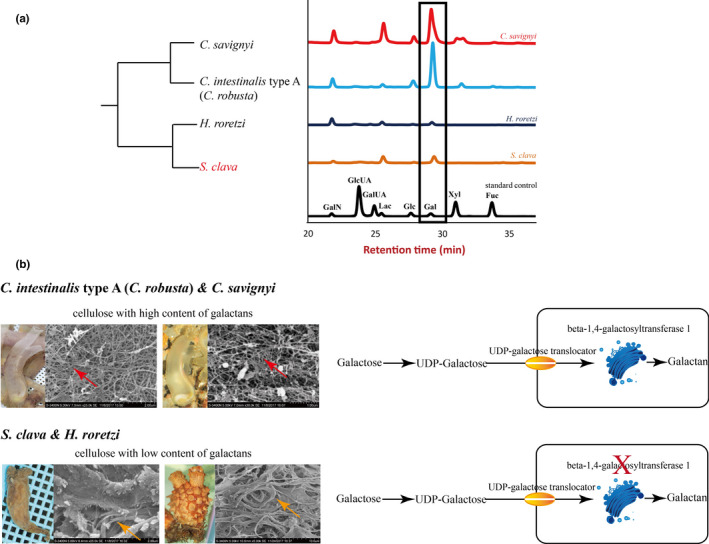FIGURE 4.

Tunic structure, monosaccharide composition, and galactan synthesis among different ascidians. a, Monosaccharide composition of the tunic in different ascidians. Both C. savignyi and C. intestinalis type A (C. robusta) had high levels of galactose, while H. roretzi and S. clava had relatively low levels of galactose. The rectangle represents the levels of galactose in different ascidians, as detected using mass spectrometry. The black line indicates the standard control. b, Tunic structures and galactan synthesis pathway in different ascidians. The main constituent of the tunic was cellulose. However, the cellulose structures with high galactans content were more scattered (red arrows) in C. intestinalis type A (C. robusta) and C. savignyi, while the cellulose structures with low galactan content were more bundled in H. roretzi and S. clava (orange arrows). In both C. intestinalis type A (C. robusta) and S. clava, galactose was first transferred into UDP‐galactose and then transported inside the cells through a UDP‐galactose translocator located in the cell membrane. The enzymes in the Golgi apparatus were responsible for the synthesis of polysaccharides. The key gene in this process, beta‐1,4‐galactosyltransferase 1, could only be identified in the genome of C. intestinalis type A (C. robusta) and C. savignyi, and not in the genome of S. clava
